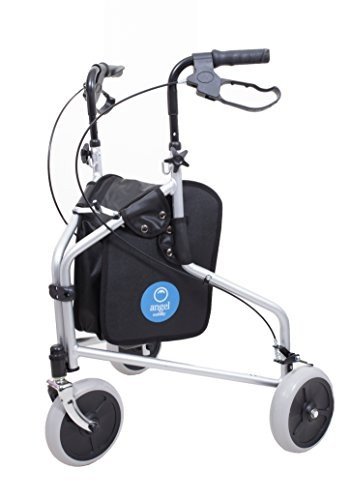Mobility Scooters: A Comprehensive Guide
Mobility scooters have actually become an important mode of transportation for lots of people facing mobility obstacles. This short article explores the numerous facets of mobility scooters, including their types, benefits, features, and a guide for prospective purchasers.
Comprehending Mobility Scooters
Mobility scooters are electrically powered devices developed for individuals with minimal mobility. They provide a method of transport for people who might have trouble walking however still wish to maintain their independence. They come in different designs and functions to accommodate a vast array of needs.
Types of Mobility Scooters
Mobility scooters can normally be categorized into 3 main types:
| Type | Description | Best For |
|---|---|---|
| Compact Scooters | These are small and lightweight, perfect for inside and short trips. | Users with restricted storage space or those who travel frequently. |
| Mid-size Scooters | A balance in between portability and stability, appropriate for both indoor and outside use. | Those who need to cover a variety of terrains. |
| Heavy-duty Scooters | Large and robust, developed for rugged outside use and heavier individuals. | Users requiring extra weight capacity or going off-road. |
Secret Features of Mobility Scooters
The choice of mobility scooter often depends upon the features that align with individual needs. Here are some of the key features to consider:
- Weight Capacity: Mobility scooters include different weight limits. It is important to choose a scooter that can effectively support the user's weight.
- Variety: The range a scooter can take a trip on a single charge varies. Depending upon user needs, one might select scooters with a variety of up to 40 miles.
- Speed: Most mobility scooters can reach speeds in between 4 to 8 miles per hour. Consider what speed is comfy and safe for the designated environment.
- Turning Radius: A compact turning radius is vital for indoor use, permitting simpler navigation in tight spaces.
- Battery Type: The kind of batteries used can impact the scooter's performance. Lead-acid and lithium-ion batteries are the most common.
Benefits of Using Mobility Scooters
The advantages of mobility scooters extend beyond just transport. Some essential benefits consist of:
- Independence: Users can navigate their environment without counting on caregivers, promoting self-reliance and self-esteem.
- Health Benefits: Using a scooter can encourage outdoor activity, leading to physical and mental health improvements by minimizing feelings of seclusion.
- Convenience: Scooters can quickly be operated in numerous environments, whether inside your home, in shopping malls, or outdoors.
Essential Considerations When Buying a Mobility Scooter
When purchasing a mobility scooter, several factors to consider can help guarantee that you select the best model:
Assess Individual Needs:
- Mobility level: Consider how much support the person will need.
- Range of use: Determine where the scooter will primarily be used (inside your home, outdoors, on rough terrains, etc).
Test Drive:
- Always test drive a number of models to discover an ideal fit. Pay attention to convenience, ease of steering, and the scooter's responsiveness.
Evaluation Safety Features:
- Look for scooters with appropriate safety features like lights, signs, and anti-tip styles.
Check Warranty and Service Options:
- A trusted guarantee and readily available service alternatives are crucial for long-lasting usage.
Frequently Asked Questions about Mobility Scooters
1. How fast do mobility scooters go?Mobility scooters generally have speeds varying from 4 to 8 miles per hour, with many designed for security instead of high-speed travel. 2. Exist weight limitations on mobility scooters?Yes, mobility
scooters include particular weight limitations, frequently ranging from
250 pounds to over 500 pounds, depending on the design. 3. Can mobility scooters be used indoors?Certain models, particularly compact scooters, are particularly designed for
indoor use and are easier to navigate in tight spaces. 4. How often do the batteries require to be replaced?Battery life can vary based on usage, however normally, with proper care, batteries may last between 1 to 3 years before requiring replacement
. 5. purchase mobility scooters covered by insurance?Coverage can vary, however some insurance coverage strategies, including Medicare and Medicaid, may cover part of the expense. It's suggested to check with specific insurance providers. Mobility scooters serve as a
important tool for numerous individuals, enabling them to maintain
their freedom and independence. By understanding the different types and features of mobility scooters, people can make educated choices customized to their particular requirements.
Whether utilized for errands, mingling, or leisurely activities, mobility scooters can improve the quality of life for those with mobility restrictions. Buying a mobility scooter is a decision that can significantly affect a person's life. Therefore, people ought to carefully evaluate their alternatives and select a design that best aligns with their way of life and mobility requirements
.

